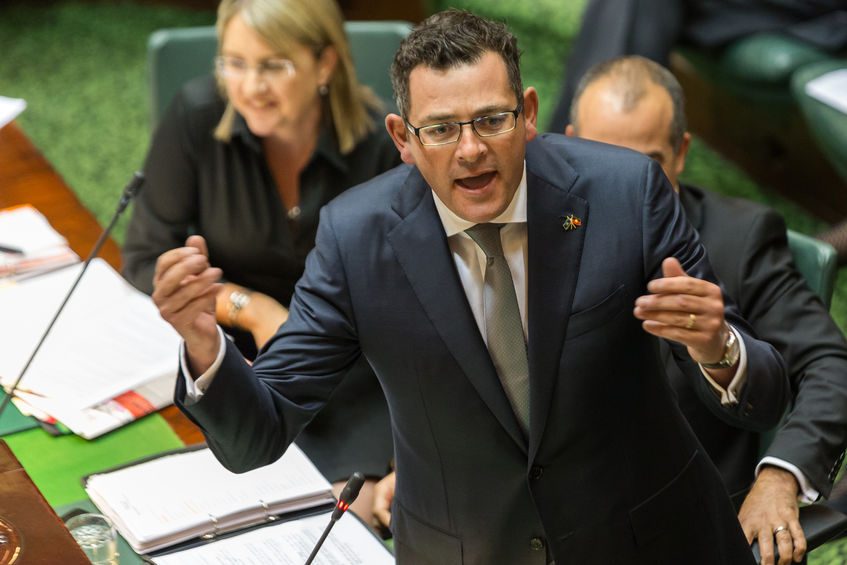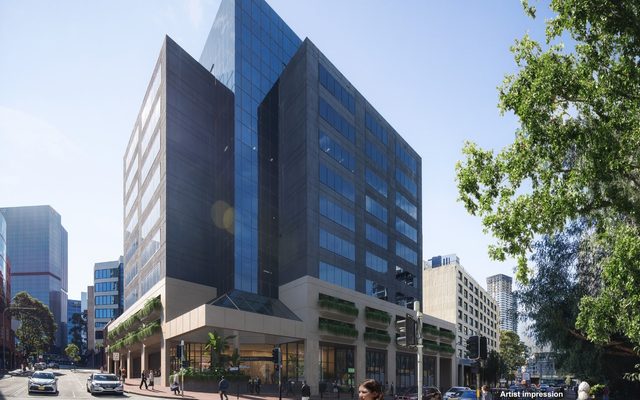This article is from the Australian Property Journal archive
VICTORIA’S property market received a big boost in the budget, with stamp duty waivers and concessions for residential, commercial and industrial properties, 50% land tax discounts to spur build-to-rent developments and a $500 million fund to help homebuyers in exchange for equity interest in the property, just to name a few.
Other key measures include:
- Mandating staff-to-resident ratios in private aged care facilities;
- $5 million investment to encourage more women to work in the construction industry;
- Additional funding to resolve tenancy disputes;
- Funding for Professional Engineers Registration Scheme;
- $111 million to speed up the planning system;
- And the previously announced $5.3 billion investment to boost social housing.
Treasurer Tim Pallas said the centrepiece of the Victorian Budget 2020/21 is the Jobs Plan, which sets an ambitious target to create 400,000 jobs by 2025, and half of those by 2022
Pallas revealed total revenue is down 4.25% compared with 2018/19, while state tax revenue has fallen 9.7% this year alone. He expects a deficit of $23.2 billion this year, forecast to reduce to $6.8 billion in 2023/24.
This means debt will reach $86.7 billion in 2020/21 and grow to $154.8 billion in 2023/24. Interest expense as a share of total revenue remains more than manageable.
But the government said interest rate on Treasury Corporation of Victoria three-year bonds is just 0.20%.
“The fastest way to repair the economy, reduce deficits and pay down debt is to drive growth, create jobs and help businesses grow. In short, by borrowing we can rebuild sooner and stronger,”
The treasurer announced the budget will provide $1.5 billion in new tax relief for Victorian businesses and families.
“There is no sugar-coating it, this pandemic has hit businesses hard. This support will help them open their doors, get back on their feet and employ more Victorians.
“With a waiver on stamp duty, we’ll help more Victorians find their home and get more Victorians back to work.” Pallas said.
Stamp duty waivers and concessions
Homebuyers will receive a waiver of up to 50% on stamp duty for homes valued at up to $1 million, effective 25 November until 30 June 2021. To help the building and construction industry, relief will be targeted at newly built or off-the-plan homes, which will receive a 50% waiver. This relief is over and above existing concessions.
Existing homes will be eligible for a 25% waiver. A first home buyer, for example, purchasing an existing home worth $700,000 would be eligible for both the first home buyer duty concession and then the new 25% waiver, totalling tax relief of more than $18,500.
The $20,000 First Home Owners Grant for regional Victorians will be extended. Another measure aimed at regional Victoria, the government will also bring forward the 50% stamp duty concession on the purchase of commercial and industrial properties to January 2021 – encouraging more businesses to open, relocate or expand.
$500 million Victorian Homebuyer Fund
The government will launch the Victorian Homebuyer Fund to help buyers get into the market.
The fund is open to buyers who do not have a 20% deposit saved, with the government contributing to the purchase price in exchange for a proportionate equity interest in the property.
Build to rent land tax discount
The building and construction industry will receive a further boost with land tax discounts of 50% for build-to-rent developments to support the fledging sector.
Planning system revamp
The government will invest $111 million to speed up delivery of vital major projects.
The government will create a new assessment model for development proposals greater than $50 million, which it pledges will make the approvals process simpler and quicker.
Minister for Planning Richard Wynne said Victoria needs a planning system geared for growth.
“As we begin rebuilding from the pandemic, we need a planning system that is set up to drive growth and create jobs as we recover from coronavirus – that’s what these reforms will do.
“This year we’ve seen just how much can be achieved online. We want to build on that strength, creating an easy, online and accessible planning and permit system.” Wynne said.
Engineers certification system
The government will invest $4.9 million to support the Professional Engineers Registration Scheme become operational. The scheme will ensure that engineers who provide services achieve, or exceed, a specified level of qualifications, experience and professional development.
The scheme will be in place for engineers who provide services in the structural, civil, electrical, mechanical and fire safety fields by the end of 2021.
Tenants in hardship
More than 57,000 tenants and landlords had registered a reduced rent agreement with Consumer Affairs Victoria and the government will provide further funding to CAV to provide support through the Residential Tenancies Dispute Resolution Scheme and the Residential Tenancy Relief Scheme.
Aged care staff-to-resident ratios
In an Australian first, Victoria will provide $40 million to help cover the cost of introducing minimum staff-to-resident ratios in private aged care – if the Commonwealth government as the primary regulator and funder of aged care also comes to the table.
Victoria is already the first state in Australia to have nurse-to-resident ratios in its public sector residential aged care.
Minister for Disability, Ageing and Carers Luke Donnellan said these reforms provide an important safeguard for both residents and staff, and ensure older Victorians are receiving the best care possible.
“Throughout the pandemic, there were just 15 positive cases in Victoria’s public aged care, including three residents and no deaths, showing the value of our ratios.
“The findings of the Royal Commission into Aged Care Quality and Safety showed the private sector aged care system had seen “insufficient” preparations for the pandemic. We believe that staff-to-resident ratios would have made a significant difference had they been in place this year,” Donnellan said.
Furthermore, the government will invest up to $134.6 million to deliver a brand-new residential 150-bed aged care facility in Cheltenham in Melbourne’s south-east, which will be operated by Monash Health at the Kingston Centre.
It will allocate $900,000 will deliver the first phase of designing and planning a new 90-bed residential aged care facility in Coburg in Melbourne’s northern suburbs.
Industry reaction
Property Council Victorian interim executive director Matthew Kandelaars described the budget as ‘big and bold’, adding that it “is right for our times and will play an enormous role in the state’s economic recovery,”
“Today’s Budget is an unprecedented response to one of the worst economic chapters in our state’s history. The property industry welcomes the core focus on stimulus to drive Victoria’s economic recovery.
“Today’s stamp duty waivers will have an immediate and positive effect for first home buyers, young families and retirees,”
“This targeted measure will pull forward economic activity and get development happening across the state – getting Victorians into work and into homes.
“We also commend the government’s support for the emerging build-to-rent sector, which will create jobs and provide high-quality rental product for Victorians,” Kandelaars said.
Urban Development Institute of Australia Victoria CEO Danni Hunter said the budget is a shot in the arm for the industry.
“This is a hugely positive budget for our industry, and for Victoria. Record investment in housing and infrastructure, and funding to modernise the planning system, will supercharge the economy… support our economic recovery by encouraging property activity and interstate migration until international migration resumes at a meaningful level,”
Victoria’s population growth over 2020-21 is now expected to be just 0.2%, compared with an average of 2.3% over the past five years. As international borders re-open, and confidence in the economic outlook improves, population growth is expected to slowly pick up to be 1.1% in 2022-23 and 1.7% by the end of 2023-24.
“The pandemic has not given us a reason to slow down. It has given us a chance to play catchup on the infrastructure and housing we need, so we can finally be on the front-foot when population growth returns. The Victorian government must do everything it can to bring international students back sooner, and restart population growth as soon as it is safe to do so,” said Hunter.
She added that the emergence of the build to rent asset class is now a certainty thanks to land tax discounts.
Australian Institute of Architects CEO Julia Cambage said delivering new housing that not only alleviates the homelessness crisis, housing affordability stress and insecurity but that also meets the highest standards of energy efficiency is precisely the type of good public policy the Institute has long-championed.
“Reforms to the state’s planning system respond to another major plank of our stimulus policy by keeping regulatory approvals flowing through State agencies and local government,” she added.
Australian Institute of Architects Victorian chapter president Bill Krotiris said the budget’s historic investments and spending will deliver outcomes that create more than just economic stimulus and jobs, but a stronger, more sustainable future for the state, especially in the built environment.
“We encourage investments in improved efficiency measures for the planning process that also emphasise the importance of quality outcomes for both the built environment and the public domain.” Cambage said.




